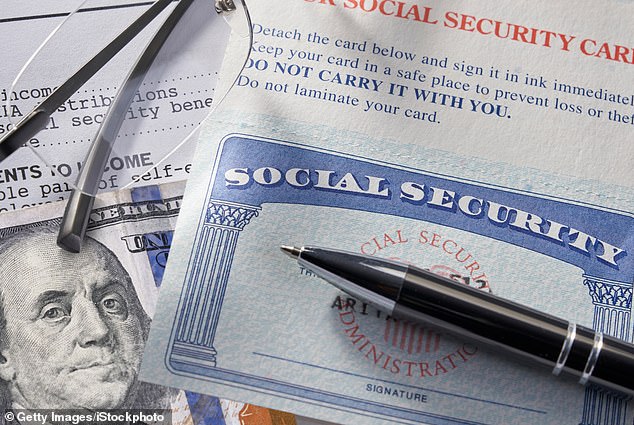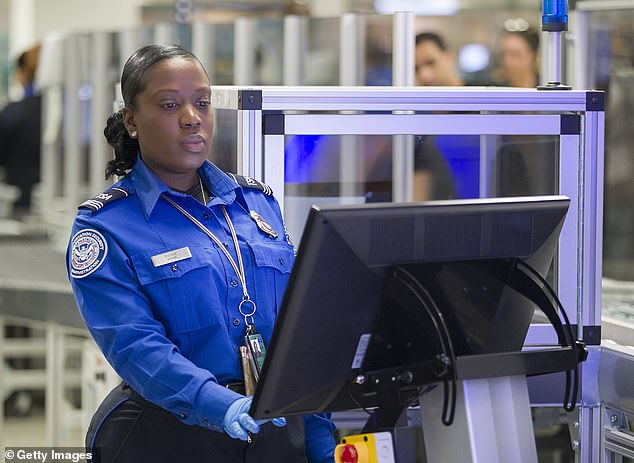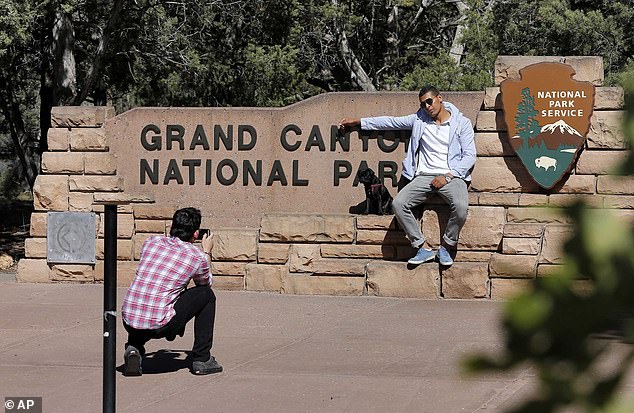America faces a Government shutdown AGAIN this Friday – here’s what it means for YOU
America is once again facing the prospect of a government shutdown, just over a month after the country narrowly avoided the latest one.
House Speaker Mike Johnson today struggled to get hardline Republicans to back his short-term funding plan, with at least seven voicing their opposition. Johnson can afford to lose no more than four Republican votes on legislation that Democrats oppose.
Lawmakers are once again at odds over U.S. spending levels — a battle that has become so bitter that former Speaker Kevin McCarthy was forced to quit his job last month. Political tensions over America’s $33 trillion national debt contributed to Moody’s downgrading the US financial outlook from “stable” to “negative” last week.
Last weekend, Johnson unveiled his “bipart” continuing resolution that would keep federal agencies at their current funding levels through the end of the year. And politicians now have until Friday to decide whether to support him or go ahead with a shutdown.
But what does it mean in real terms? DailyMail.com explains what can happen.
America is once again facing the prospect of a government shutdown, just over a month after the country narrowly avoided the latest
Social Security
According to experts, Social Security benefits would remain unaffected during a government shutdown, but contacting the Social Security Administration (SSA) in case of problems could be more difficult.
If lawmakers don’t find a solution by Nov. 17 and a shutdown does occur, Social Security’s 66 million recipients will still receive their full federal monthly checks — which average $1,827 for retirees.
This is because Social Security is funded through permanent, rather than annual, federal appropriations.
However, the government’s plan also stated that about 14 percent of its workforce of nearly 62,000 employees would be laid off in the event of a shutdown.

The Social Security Administration’s plan also noted that about 14 percent of its workforce of nearly 62,000 workers would be laid off
Veterans benefits
As the latest shutdown loomed, Veterans Affairs Secretary Denis McDonough noted that VA medical care and disability compensation, among other benefits, would continue in the event of a shutdown.
He also said at a press conference that some employees would be furloughed and that some offices would be closed as a result.
trip
Fortunately for travelers, most government employees involved in air travel will be retained because they are considered “necessary to protect life and property.”
The vast majority of Transportation Security Administration (TSA) agents, who are considered essential workers, are expected to work without pay. But if this continues, there may be fewer people working and longer lines at security checkpoints.
Likewise, air traffic controllers and border officials will have to work without paychecks until the shutdown ends.
Americans who need to renew their passports or attend scheduled visa services should be able to do so, as passport processing, supervised by the State Department, will continue both domestically and abroad.
According to a separate contingency plan submitted by the State Department in August, “Consular operations at home and abroad will remain 100 percent operational as long as there are sufficient reimbursements to support operations.”
A Department of Transportation contingency plan notes that more than 25,000 Federal Aviation Administration (FAA) personnel will be retained in the event of a shutdown because they are “deemed necessary to protect life and property.”

More than 95 percent of TSA agents — about 58,000 — will be hired without pay. Pictured is a TSA agent in Miami, Florida
National parks
Most national parks will close in the event of a shutdown.
“In the event of a lapse in annual government appropriations, National Park Service (NPS) sites will be closed,” the Department of the Interior said last month.
“This means that the majority of national parks will be completely closed to the public,” the report continued.
All Smithsonian museums, including the National Zoo, would close during a shutdown.
This time, the consequences would be even more catastrophic than during the Thanksgiving and winter holidays — one of the busiest times of the year for parks.

Arizona and Utah will keep their national parks open if a closure threatens access to Utah’s Grand Canyon and Zion Valley
Federal courts
Federal courts could operate for three weeks without congressional funding, depending on reimbursements and other funds, but would eventually have to scale back operations. The Supreme Court would also remain open.
The criminal charges, including the two federal cases against former President Donald Trump, would continue. Most civil lawsuits would be postponed. The important antitrust case against Google would continue.
Education
Pell Grants and student loans would still be paid, but could be disrupted as most Department of Education employees would be furloughed.
A prolonged closure could “severely limit” aid to schools, universities and other educational institutions, the department says. It could also delay funding due later this year.
Earlier this year, the White House also warned that a shutdown could result in 10,000 children losing access to Head Start programs across the country because the Department of Health and Human Services will not award grants during a shutdown.
When was the last shutdown and how long did it last?
The last shutdown lasted 34 days from December 2018 to January 2019 – the longest in history.
At that point, congressional funding for nine departments with approximately 800,000 employees ran out. According to a report from the Congressional Budget Office (CBO), the five-week partial shutdown cost the economy approximately $11 billion. After the shutdown ended, all but about $3 billion was recovered.
It also forced TSA agents out of work as they tried to find other ways to make money.
Previously, the record was 21 days during a 1995-1996 shutdown, when President Bill Clinton refused to accept the sharp spending cuts and tax cuts proposed by Chairman Newt Gingrich.
In 2013, there was another 16-day shutdown as Republicans tried to gut the Affordable Care Act.
How many shutdowns has the US experienced?
According to the Congressional Research Service, there have been 20 gaps in funding since 1976 that lasted at least a day.
Before this, the government normally functioned even if the spending laws were not passed. Two opinions from Attorney General Benjamin Civiletti in 1980 stated that it was illegal for the government to spend money without congressional approval.
